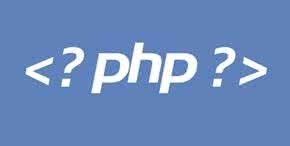These 5 functions for obtaining the intersection have 5 corresponding functions for obtaining the difference set. I am the link. array_intersect($arr1, $arr2); //Get the intersection of the same key value in the array array_intersect_key($arr1, $arr2); //Get the intersection of arrays with the same key name array_intersect_assoc(same as above); //Get the intersection of the key values ??of the array with the same key name array_intersect_uassoc(same as above, 'custom callback function'); //Use a custom callback function to obtain the intersection of the key values ??of the array with the same key name array_intersect_ukey (same as above, custom callback function); //Use a custom callback function to obtain the intersection of data with the same key name 1 $arr1 = array('r' => 'red','u' => 'blue'
1. 10 recommended articles about array_intersect_ukey()

##Introduction: These 5 functions for obtaining the intersection have 5 corresponding functions for obtaining the difference set. It is a link. array_intersect($arr1, $arr2);//Get the intersection of arrays with the same key value array_intersect_key($arr1, $arr2);//Get the intersection of the array with the same key name array_intersect_assoc(same as above);//Get the array with the same key Intersection of name key values ??array_intersect_uassoc (same as above, 'custom...
2. array_diff_ukey function usage summary

##3.
Details about the array_diff_ukey function. Introduction Introduction: Definition and usage array_diff_ukey() function is used to compare two (or more ) key name of the array, and returns the difference set. Note: This function uses a user-defined function to compare the key names! This function compares the key names of two (or more) arrays and returns a difference set array. The array includes all keys that are in the compared array (array1) but not in any other parameter array (array2? or array3? etc.) Syntax array_diff_ukey(a...
Introduction: Definition and usage array_diff_ukey() function is used to compare two (or more ) key name of the array, and returns the difference set. Note: This function uses a user-defined function to compare the key names! This function compares the key names of two (or more) arrays and returns a difference set array. The array includes all keys that are in the compared array (array1) but not in any other parameter array (array2? or array3? etc.) Syntax array_diff_ukey(a...
4.
PHP array_diff_ukey() function definition and usage ##Introduction: Definition and Usage The array_diff_ukey() function is used to compare the key names of two (or more) arrays and return the difference. Note: This function uses a user-defined function to compare key names! This function compares the keys of two (or more) arrays and returns a difference array that includes all keys in the compared array (array1) but not in any of the other argument arrays (array2 or array3, etc. ) in the key name. Grammar
##Introduction: Definition and Usage The array_diff_ukey() function is used to compare the key names of two (or more) arrays and return the difference. Note: This function uses a user-defined function to compare key names! This function compares the keys of two (or more) arrays and returns a difference array that includes all keys in the compared array (array1) but not in any of the other argument arrays (array2 or array3, etc. ) in the key name. Grammar
##5. Commonly used array functions in php (3) (functions to obtain array intersection array_intersect(), array_intersect_key(), array_intersect_assoc(), array_intersect_uassoc(), array_intersect_ukey())
##Introduction: Commonly used array functions in PHP (3) (functions to obtain array intersection array_intersect(), array_intersect_key(), array_intersect_assoc(), array_intersect_uassoc (), array_intersect_ukey())
6.php-Arrays function-array_diff_ukey-Use callback function to compare key names to calculate the difference set of array_PHP tutorial
Introduction: php-Arrays function-array_diff_ukey-uses the callback function to compare key names to calculate the difference set of the array. The array_diff_ukey() function uses the callback function to compare the key names to calculate the difference set of the array [Function] This function will return an array that contains everything in array1 but not in any other
Introduction: php-Arrays function-array_intersect_ukey- Use callback functions to compare key names to calculate the intersection of arrays. array_intersect_ukey() uses the callback function to compare key names to calculate the intersection of arrays [Function] This function will return an array that contains everything in array1 but not in any other
8. How to learn PHP array_diff_ukey()_PHP tutorial
Introduction: How to learn PHP array_diff_ukey(). How to learn PHP array_diff_ukey() Definition and Usage array_diff_ukey() Returns an array containing all keys that appear in array1 but do not appear in any other parameter array
Introduction: php-Arrays function-array_diff_ukey-use callback function to compare Key name comparison calculates the difference of arrays. The array_diff_ukey() function uses the callback function to compare the key names to calculate the difference set of the array [Function] This function will return an array that contains everything in array1 but not in any other
Introduction: php-Arrays function-array_intersect_ukey-use callback function Computes the intersection of arrays by comparing key names. array_intersect_ukey() uses the callback function to compare key names to calculate the intersection of arrays [Function] This function will return an array that contains all items in array1 but not in any other
[Related Q&A recommendations]:
The above is the detailed content of Recommended articles about ukey() function. For more information, please follow other related articles on the PHP Chinese website!

Hot AI Tools

Undress AI Tool
Undress images for free

Undresser.AI Undress
AI-powered app for creating realistic nude photos

AI Clothes Remover
Online AI tool for removing clothes from photos.

Clothoff.io
AI clothes remover

Video Face Swap
Swap faces in any video effortlessly with our completely free AI face swap tool!

Hot Article

Hot Tools

Notepad++7.3.1
Easy-to-use and free code editor

SublimeText3 Chinese version
Chinese version, very easy to use

Zend Studio 13.0.1
Powerful PHP integrated development environment

Dreamweaver CS6
Visual web development tools

SublimeText3 Mac version
God-level code editing software (SublimeText3)

Hot Topics
 A Simple Guide to PHP Setup
Jul 18, 2025 am 04:25 AM
A Simple Guide to PHP Setup
Jul 18, 2025 am 04:25 AM
The key to setting up PHP is to clarify the installation method, configure php.ini, connect to the web server and enable necessary extensions. 1. Install PHP: Use apt for Linux, Homebrew for Mac, and XAMPP recommended for Windows; 2. Configure php.ini: Adjust error reports, upload restrictions, etc. and restart the server; 3. Use web server: Apache uses mod_php, Nginx uses PHP-FPM; 4. Install commonly used extensions: such as mysqli, json, mbstring, etc. to support full functions.
 Quick PHP Installation Tutorial
Jul 18, 2025 am 04:52 AM
Quick PHP Installation Tutorial
Jul 18, 2025 am 04:52 AM
ToinstallPHPquickly,useXAMPPonWindowsorHomebrewonmacOS.1.OnWindows,downloadandinstallXAMPP,selectcomponents,startApache,andplacefilesinhtdocs.2.Alternatively,manuallyinstallPHPfromphp.netandsetupaserverlikeApache.3.OnmacOS,installHomebrew,thenrun'bre
 Learning PHP: A Beginner's Guide
Jul 18, 2025 am 04:54 AM
Learning PHP: A Beginner's Guide
Jul 18, 2025 am 04:54 AM
TolearnPHPeffectively,startbysettingupalocalserverenvironmentusingtoolslikeXAMPPandacodeeditorlikeVSCode.1)InstallXAMPPforApache,MySQL,andPHP.2)Useacodeeditorforsyntaxsupport.3)TestyoursetupwithasimplePHPfile.Next,learnPHPbasicsincludingvariables,ech
 Tips for Writing PHP Comments
Jul 18, 2025 am 04:51 AM
Tips for Writing PHP Comments
Jul 18, 2025 am 04:51 AM
The key to writing PHP comments is to clarify the purpose and specifications. Comments should explain "why" rather than "what was done", avoiding redundancy or too simplicity. 1. Use a unified format, such as docblock (/*/) for class and method descriptions to improve readability and tool compatibility; 2. Emphasize the reasons behind the logic, such as why JS jumps need to be output manually; 3. Add an overview description before complex code, describe the process in steps, and help understand the overall idea; 4. Use TODO and FIXME rationally to mark to-do items and problems to facilitate subsequent tracking and collaboration. Good annotations can reduce communication costs and improve code maintenance efficiency.
 Commenting Out Code in PHP
Jul 18, 2025 am 04:57 AM
Commenting Out Code in PHP
Jul 18, 2025 am 04:57 AM
There are three common methods for PHP comment code: 1. Use // or # to block one line of code, and it is recommended to use //; 2. Use /.../ to wrap code blocks with multiple lines, which cannot be nested but can be crossed; 3. Combination skills comments such as using /if(){}/ to control logic blocks, or to improve efficiency with editor shortcut keys, you should pay attention to closing symbols and avoid nesting when using them.
 Mastering PHP Block Comments
Jul 18, 2025 am 04:35 AM
Mastering PHP Block Comments
Jul 18, 2025 am 04:35 AM
PHPblockcommentsareusefulforwritingmulti-lineexplanations,temporarilydisablingcode,andgeneratingdocumentation.Theyshouldnotbenestedorleftunclosed.BlockcommentshelpindocumentingfunctionswithPHPDoc,whichtoolslikePhpStormuseforauto-completionanderrorche
 Writing Effective PHP Comments
Jul 18, 2025 am 04:44 AM
Writing Effective PHP Comments
Jul 18, 2025 am 04:44 AM
Comments cannot be careless because they want to explain the reasons for the existence of the code rather than the functions, such as compatibility with old interfaces or third-party restrictions, otherwise people who read the code can only rely on guessing. The areas that must be commented include complex conditional judgments, special error handling logic, and temporary bypass restrictions. A more practical way to write comments is to select single-line comments or block comments based on the scene. Use document block comments to explain parameters and return values at the beginning of functions, classes, and files, and keep comments updated. For complex logic, you can add a line to the previous one to summarize the overall intention. At the same time, do not use comments to seal code, but use version control tools.
 Improving Readability with Comments
Jul 18, 2025 am 04:46 AM
Improving Readability with Comments
Jul 18, 2025 am 04:46 AM
The key to writing good comments is to explain "why" rather than just "what was done" to improve the readability of the code. 1. Comments should explain logical reasons, such as considerations behind value selection or processing; 2. Use paragraph annotations for complex logic to summarize the overall idea of functions or algorithms; 3. Regularly maintain comments to ensure consistency with the code, avoid misleading, and delete outdated content if necessary; 4. Synchronously check comments when reviewing the code, and record public logic through documents to reduce the burden of code comments.






